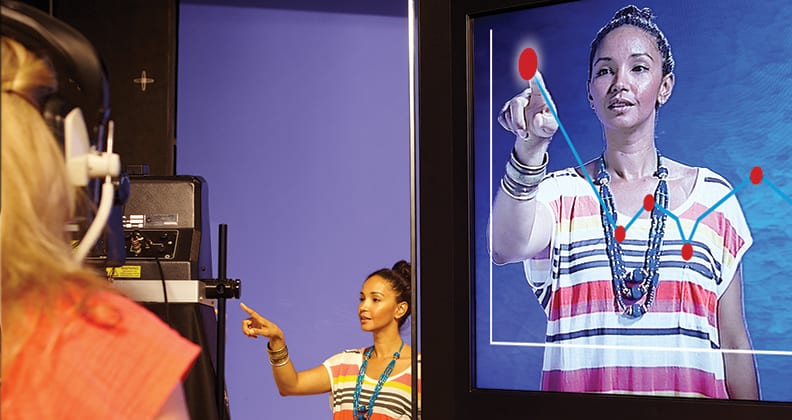From 2014, Curtin’s School of Media, Culture and Creative Arts will be offering students an exciting new field of study.
The new course offerings – in the area of Visualisation Technologies – commenced with an undergraduate major in 2013. Additional components of the program will follow, including a coursework masters and research program planned for 2015.
Program Coordinator Howard Worth says that the new field of study responds to current demand for graduates in all professional areas to have skills in reading, representing and manipulating data graphically.
“All graduates will need to work with various forms of data visualisation in their future careers,” Mr Worth said.
“Tasks such as modelling large amounts of data or developing new apps are now part of all professional areas. Whether its anthropology, geography, media or fashion design, the use of three-dimensional motion graphics and a variety of other digitally-based media are now used to explore and communicate information.”
Undergraduate students can take the new course at Curtin as a single major or as a double major in conjunction with another area of study. Alternatively, they can simply opt for Visualisation Technologies electives to complement their primary field of study.
Students enrolled in the undergraduate course will learn critical thinking and practical skills in a wide range of areas, also applying theories of visualisation to their own disciplines. Individual units include Apps and Locative Media, Augmented Reality, Human–Computer Interfaces, and Virtual and Immersive Environments.
Learning will be supported through new facilities intended for the major and for visualisation generally – including a 100 terabyte server, the new Digital Creativity Laboratories opened early in 2012, a Green Screen Studio and a flexible teaching room which will be built at Curtin and ready for 2014.
“What is unique about the Curtin program is that it is a whole-of-discipline approach to digital technologies,” Mr Worth said.
“Most other courses in this field tend to see visualisation as primarily a design course.
“At Curtin, we’ve identified a primary area of research and study and created an entirely new area that will be available to all streams of study in Humanities, and will eventually be a robust, flagship field of study at Curtin.
“To this end, we are ensuring a complete field of study covering undergraduate to high-level research programs that will attract the best researchers in this field to the University.”
To support the initiative, a new Chair in Cultural Visualisation, Dr Erik Champion, joined Curtin this month. Dr Champion moved to Curtin from DIGHUMLAB in Aarhus where he has been working on the development of digital humanities in research, education and knowledge transfer across Denmark and Europe.
Associate Professor Steve Mickler, Head of the School of Media, Culture and Creative Arts, said that the course had been established to meet the growing demand for emerging technology-savvy graduates in virtually all disciplines who can understand, manage and communicate using virtual and augmented realities, interactive media and immersive technologies.



